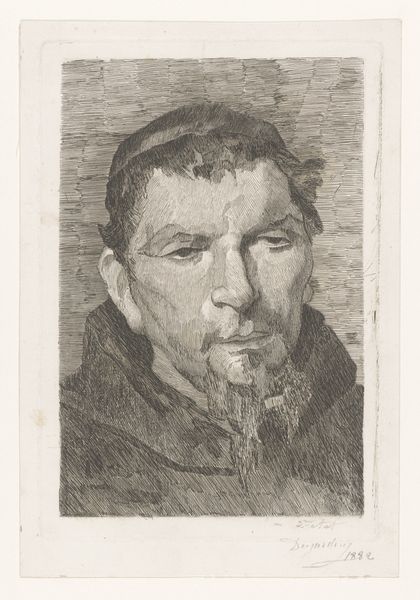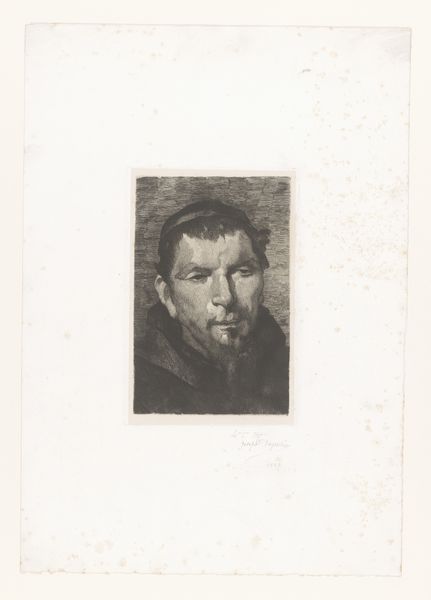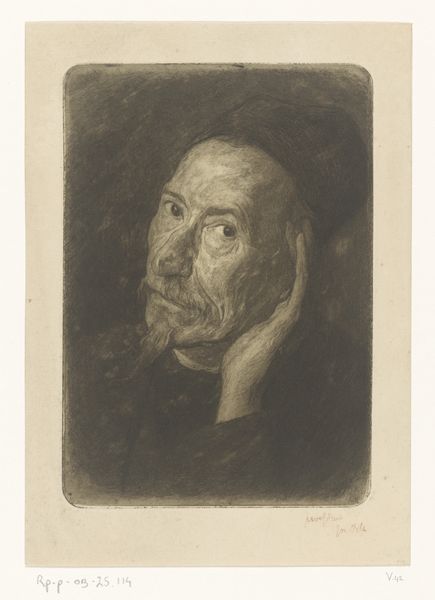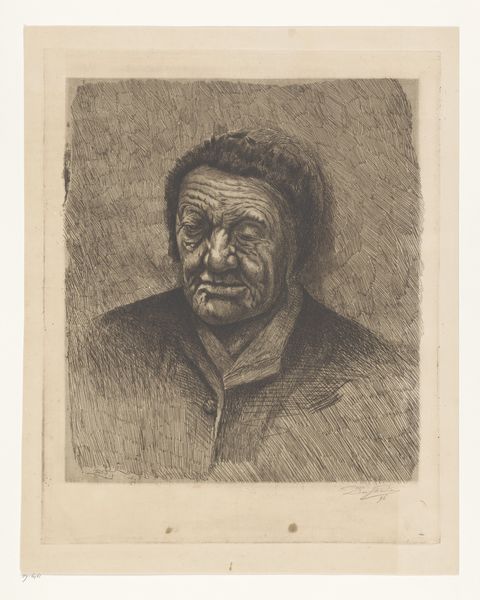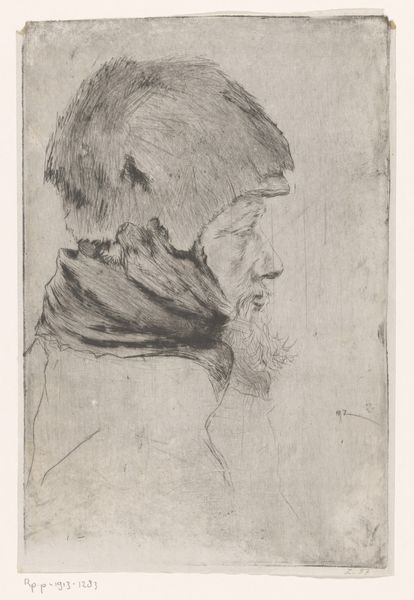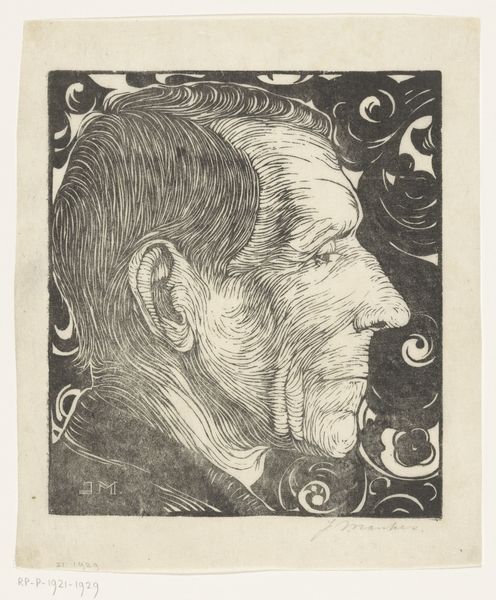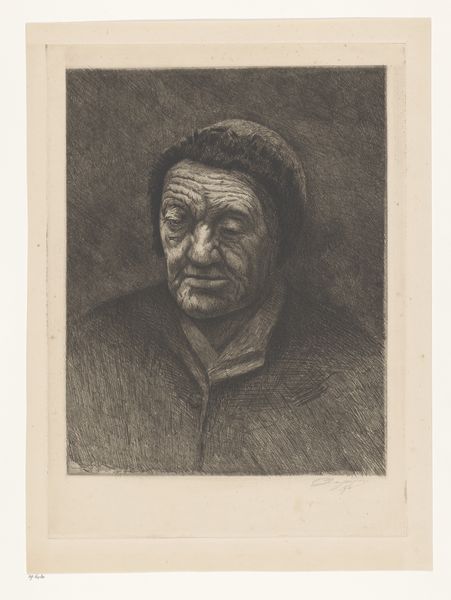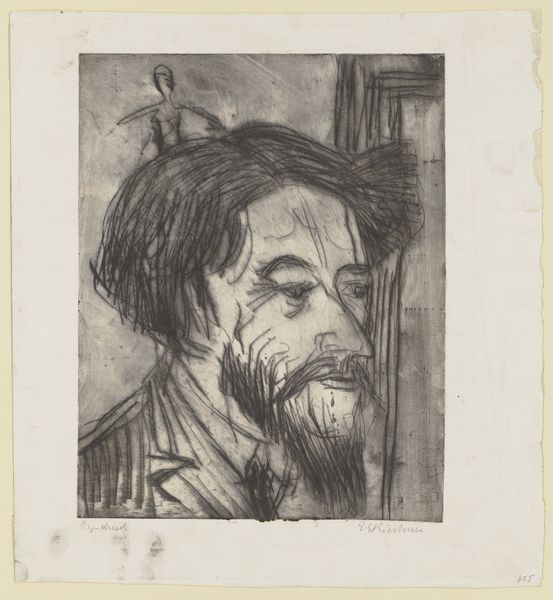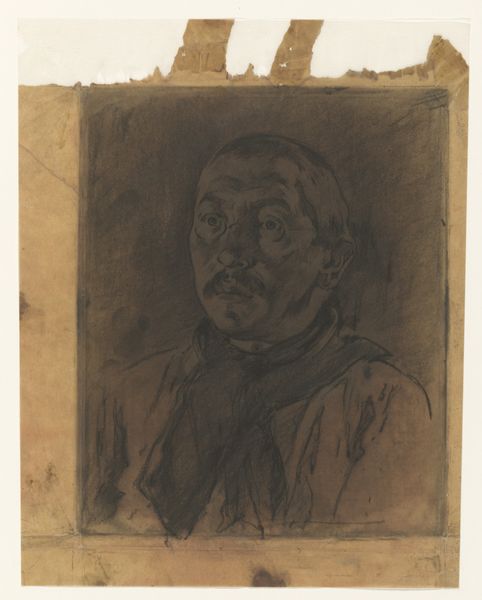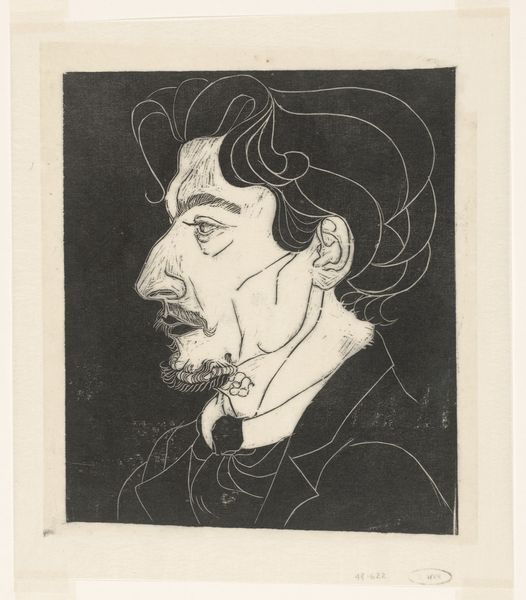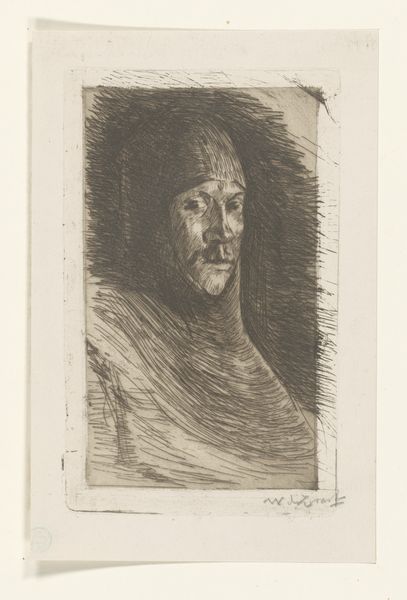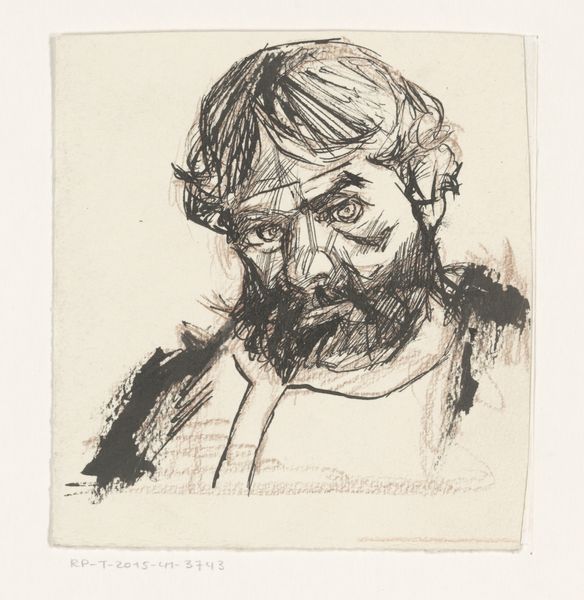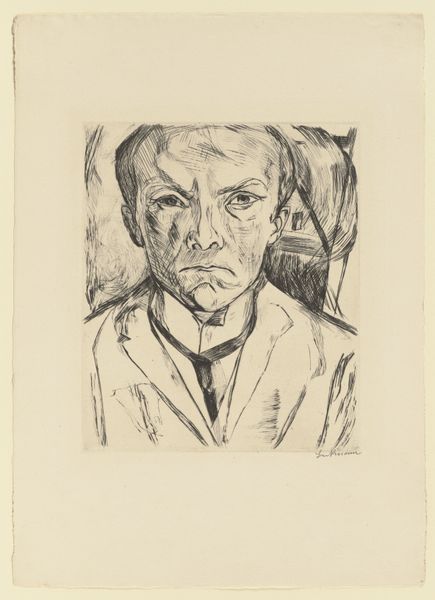
drawing, print, etching, charcoal
#
portrait
#
drawing
# print
#
etching
#
charcoal drawing
#
pencil drawing
#
portrait drawing
#
charcoal
#
realism
Dimensions: height 210 mm, width 143 mm
Copyright: Rijks Museum: Open Domain
Curator: Joseph Dujardin's "Portret van een onbekende monnik," created in 1882, offers us an intriguing glimpse into a face from the past through drawing, etching, charcoal, and print techniques. Editor: Striking. The somber expression and almost stark hatching convey a sense of austerity. One senses a deliberate rendering of texture that's almost palpable. Curator: Indeed, the image's construction draws attention to the rigorous lines composing the form. Notice how Dujardin masterfully uses charcoal and etching to define not only the figure's bone structure, especially in the cheeks and brow, but also to suggest a weight, both physical and metaphorical. The realism pulls one in. Editor: And consider the societal implications. Portraiture, particularly in the late 19th century, often served the bourgeoisie. Here, Dujardin elects a seemingly ordinary monk, an inversion of traditional hierarchies that raises many questions concerning class representation. Curator: An interesting point about the departure from conventional portrait subjects! But focusing back on Dujardin’s methods, we might see a nod to academic approaches, as realism necessitates the artist demonstrating his firm grasp on line, tone, and, arguably, an idealisation of the subject's ordinariness. Note, though, how Dujardin allows the background and the subject's clothing to seemingly merge with these rigorous mark-making conventions; a visual emphasis upon the individual features of the figure's face emerges through contrast. Editor: Perhaps we could interpret that compositional choice as a commentary on the dissolution of the individual within religious orders during this era. Or conversely, his choice reinforces notions about the church itself acting as the very ‘background’ in peoples’ lives at this historical juncture. How were such figures like this one presented? What public role did this monk serve, even in an era increasingly characterised by its secularization? Curator: Speculations aside, by examining this work primarily as a feat of representational art, Dujardin certainly encourages close viewing, prompting questions about his skills, process, and ability to coax texture out of limited tonal variations through these interesting print media. Editor: Undeniably, there is a potent interplay between formal constraints and social narratives at play. Dujardin's print compels us to interrogate how historical contexts fundamentally mediate even what seems like a direct representation. Curator: So, in short, regardless of approach, this portrait, realized through these combined processes, evokes an enigmatic figure whose story both attracts and subtly evades our grasp, and whose presentation remains historically contextual. Editor: And in that elusiveness lies its enduring power and cultural reverberation.
Comments
No comments
Be the first to comment and join the conversation on the ultimate creative platform.
